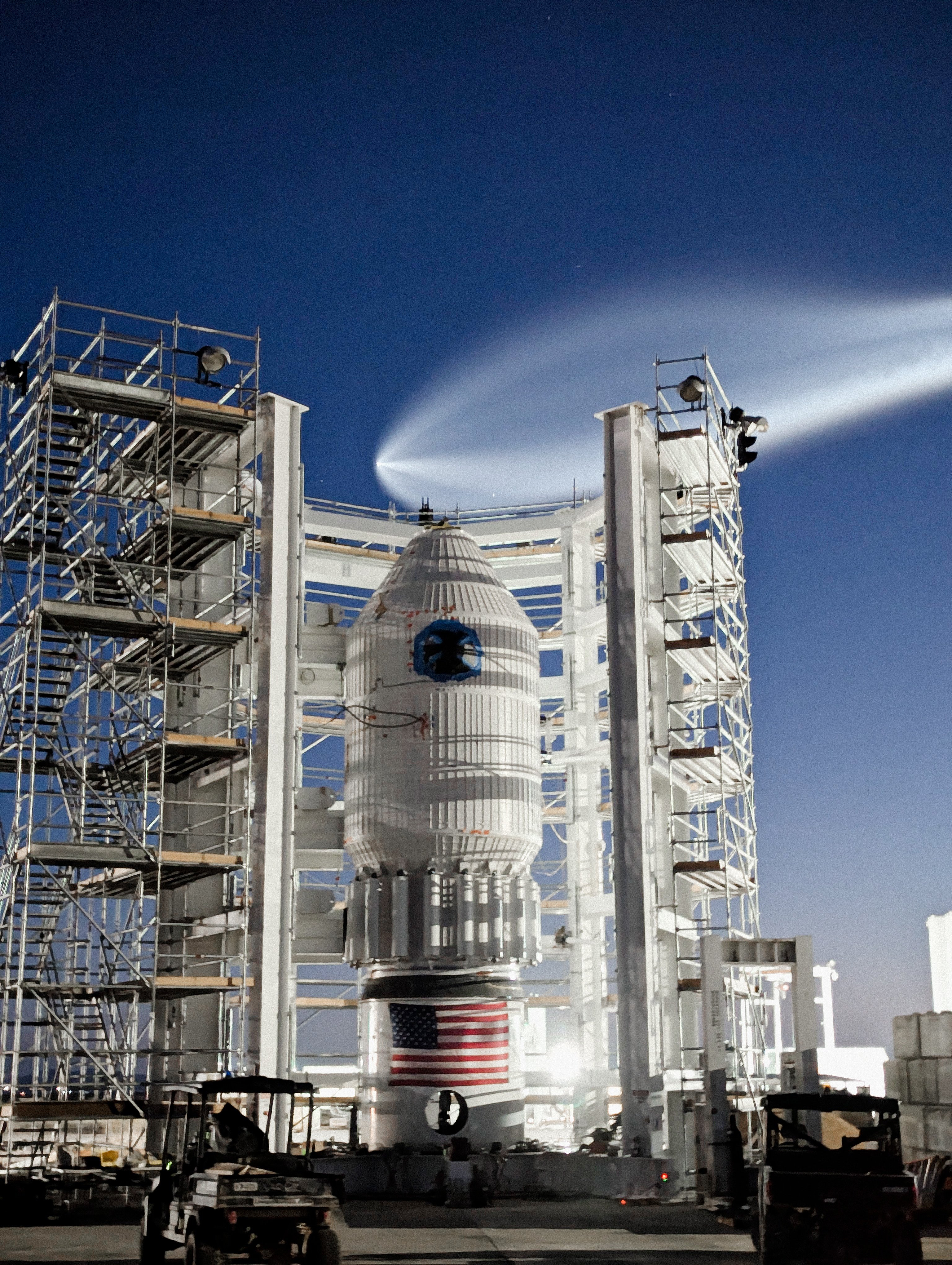
On the evening of February 10, SpaceX successfully launched a Falcon 9 rocket from California, marking yet another step in its efforts to expand the Starlink internet satellite network. To those watching from the ground, however, it became a mesmerizing display against the night sky.
The Falcon 9 rocket took off from Vandenberg Air Force Base just as twilight descended. The dimming light from the recently set sun illuminated the rocket’s exhaust plume, creating a stunning visual effect that some viewers likened to a “space jellyfish.”
“Absolutely breathtaking!” exclaimed photographer FirePhotoGirl on social media platform X, sharing captivating images and video from the launch. The visuals captured the bright plume of the rocket soaring above a well-lit pool.
During this launch, the Falcon 9 successfully deployed 23 Starlink satellites into orbit from Vandenberg’s Space Launch Complex 4 East. The rocket’s first stage then completed its mission by landing on the drone ship, Of Course I Still Love You. This launch represented SpaceX’s 18th mission for Falcon 9 in 2025.
Skywatcher Dima Zeniuk shared an impressive video on X showing the Starlink launch arcing over Los Angeles, along with a remarkable timelapse that highlighted the dramatic moment of the first stage separating from the upper stage of the Falcon 9.
“A stunning timelapse of a SpaceX launch over downtown Los Angeles,” he remarked in his video post.
Stunning timelapse of a SpaceX launch over downtown Los Angeles pic.twitter.com/aOsBBDO8EFFebruary 8, 2025
The “jellyfish” effect even made an appearance during testing of a future passenger for SpaceX: the Haven-1 private space station module, developed by Vast, which was being tested in California’s Mojave Desert.
This impressive launch showcased the Haven-1 prototype module, with Vast’s team noting on social media, “Haven-1 primary structure qualification at Vast’s Mojave test site, illuminated by SpaceX’s Falcon 9 lighting up the night sky—Haven-1’s prospective launch partner.”
Vast aims to establish a commercial space station in low Earth orbit, with plans for SpaceX to facilitate the launch of the Haven-1 module by May 2026.

In a striking display, SpaceX shared several stunning images from the Starlink launch, showcasing the “jellyfish” effect, the rocket as it ascends into space, and a stunning long-exposure shot illustrating the launch as a radiant arc of light against cloudy skies.
Falcon 9 successfully delivers 23 @Starlink satellites to orbit from California pic.twitter.com/NIVJSaMmzKFebruary 11, 2025
SpaceX is maintaining a vigorous launch schedule, with Monday’s mission being the first of two consecutive Starlink deployments using Falcon 9 rockets. The subsequent launch from Cape Canaveral Space Force Station in Florida successfully placed 21 additional Starlink satellites into orbit on February 11.
Currently, SpaceX operates approximately 6,990 Starlink satellites in orbit, as reported by Jonathan McDowell, an astrophysicist tracking satellite activity.









